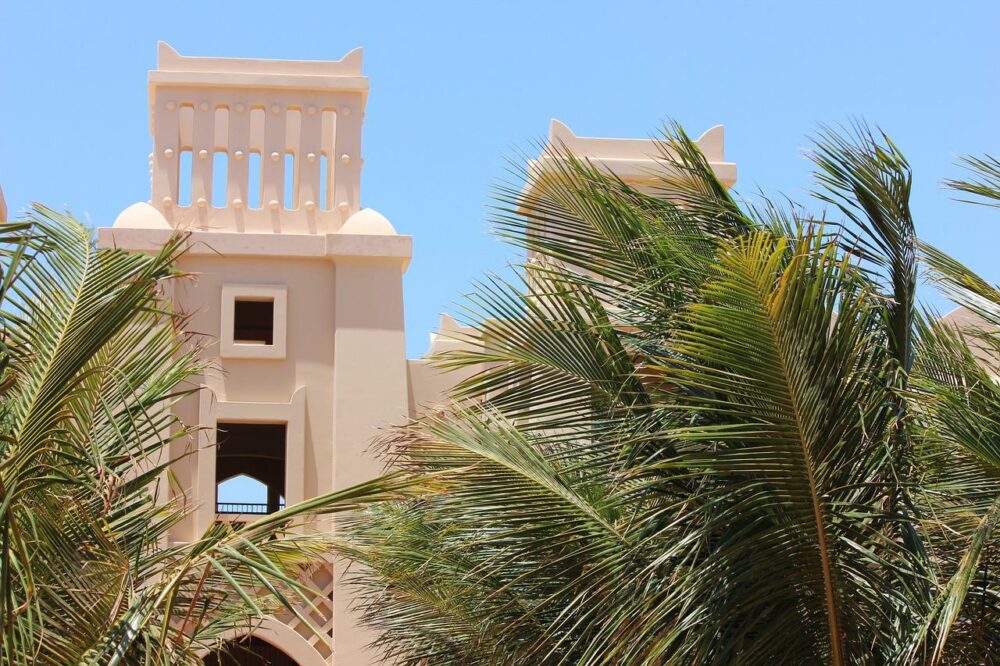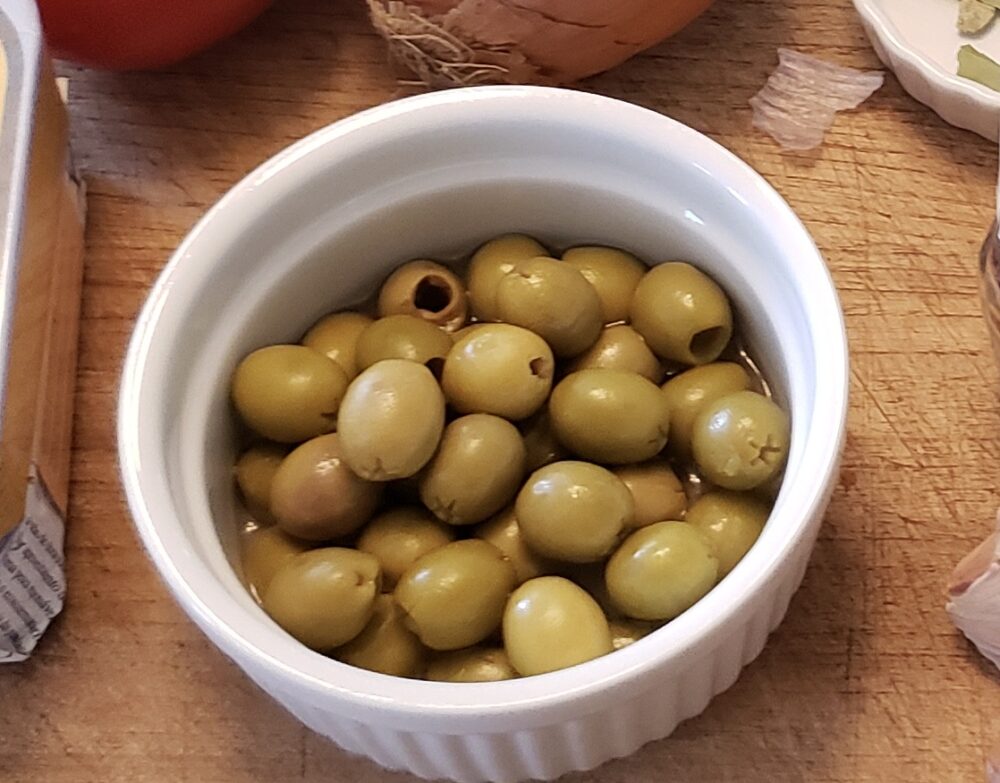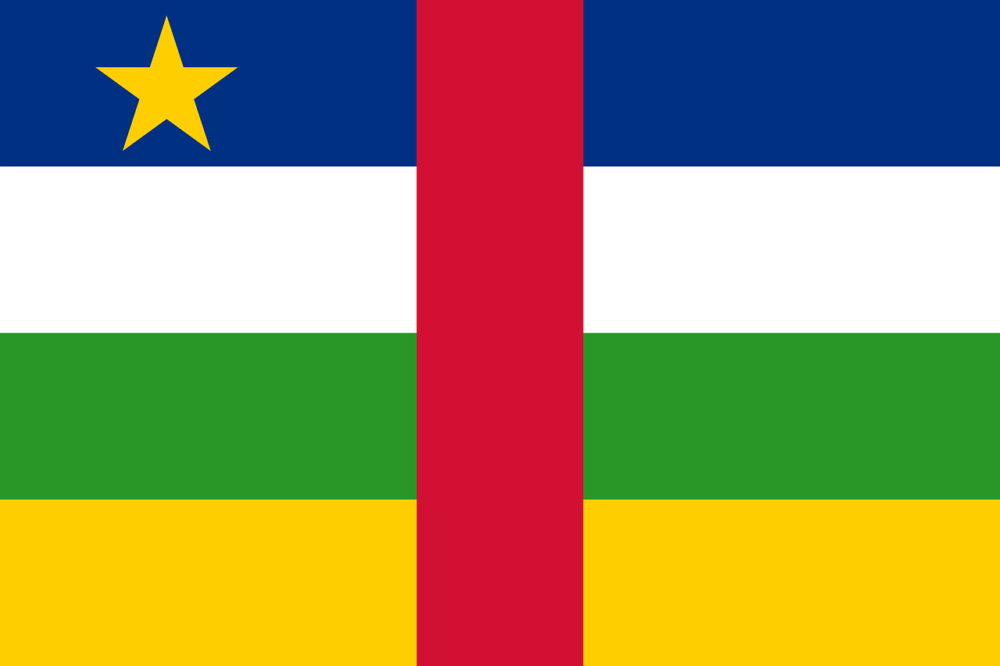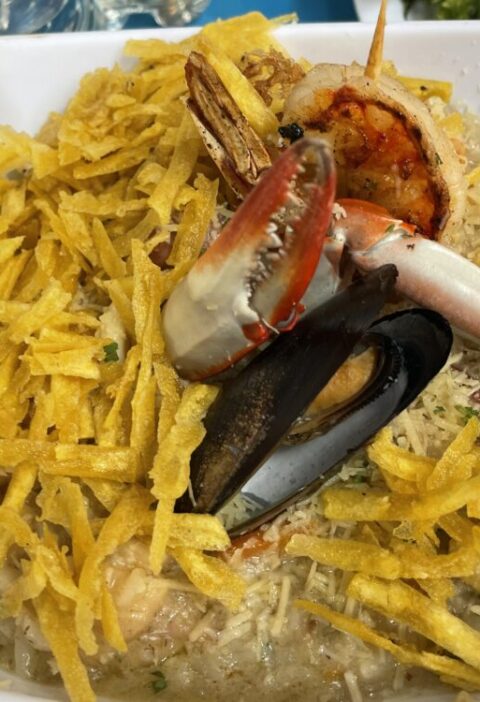Sam gets to learn what an archipelago is and I continue trying to pronounce it correctly.
A series of islands off the coast of West Africa, Cabo Verde (or Cape Verde) conjures up images of beautiful beaches, humpback whales, and volcanoes. But it’s also a place with really delicious food. Say it in English or Portuguese, but let’s all meet in Cabo Verde.
THE PLACE AND ITS CUISINE
Cape Verde is an archipelago made up of 10 islands in the Atlantic Ocean about 400 miles off the coast of Western Africa. It was a Portuguese colony until 1975.
The island nation is known for white sandy beaches and crystal clear waters, in addition to humpback whales, loggerhead turtles, and lots of volcanoes that make their home here. It is a European tourist destination that many Americans are not as familiar with.
When it comes to cuisine, as usual, we can look at the people who settled here along with the geography to understand what kind of food is eaten.
Both Portuguese and African influences have had a huge impact in the country’s food and culture. Many of the dishes that are eaten here are also eaten in other Portuguese colonies or along the coast of West Africa.

Corn, beans, and cassava play very important roles, along with a wide range of seafood (remember the whole island thing) from lobster to eel to sawfish (a type of ray).
There is a wide range of flavors in the country and from what I have heard, the cuisine is one of the reasons to visit. Sign me up.
Traditional Dishes:
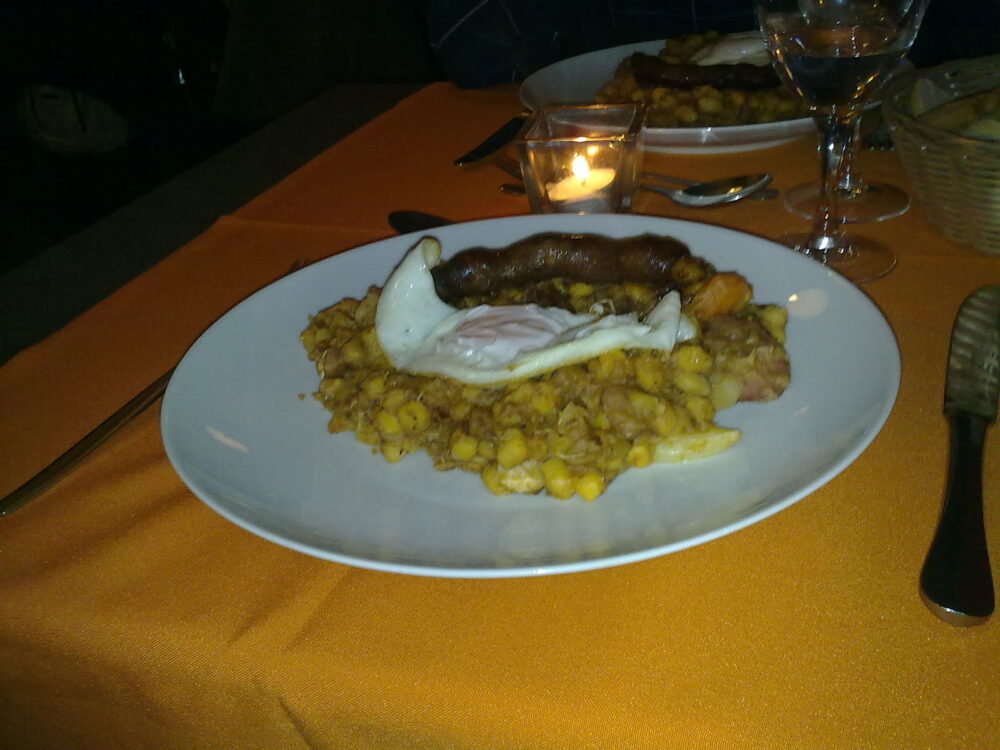
CACHUPA – think of this as a white bean version of Brazilian feijoada; it’s a hearty bean and corn stew with meat, vegetables, and sometimes fish; usually leftovers are fried the next morning for breakfast and topped with an egg
JAGACIDA – known locally as “jag”, this is a very popular rice dish with kidney beans, sausage, onions, paprika, and other spices and vegetables
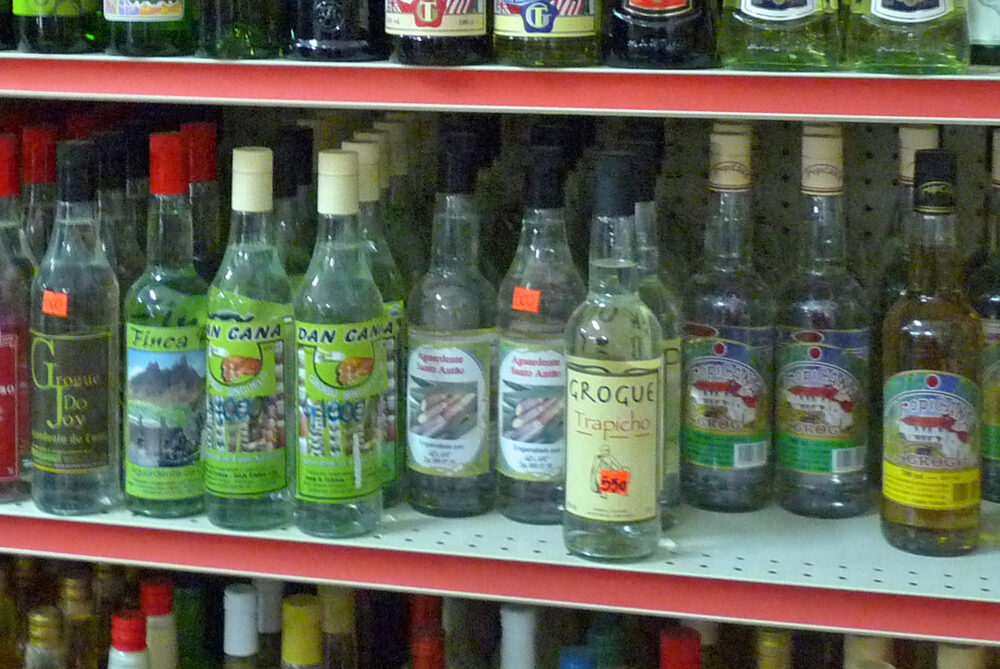
GROGUE – the most well-known Cape Verdean drink, this is a liquor made from distilled sugar cane; similar to Brazilian cachaça
CUSCUZ DE MILHO – a sweet breakfast dish in the world of cornbread made from cornmeal or cassava flour and sweetened with sugar and cinnamon
CAPE VERDEAN FOOD IN NEW YORK
There are plenty of restaurants with Verde in its name (Colonia Verde, Locanda Verde, etc.) but unfortunately my searches don’t reveal any Cape or Cabo Verdean spots to get traditional food.
The closest would be at some of the city’s Brazilian or Portuguese restaurants, where there is a similar influence, but unfortunately nothing unique to this West African nation.
THE VIDEO
This is one of our shorter videos, since we picked a rather simple dish to make. But that doesn’t mean it’s not packed with lots of fun stuff.
We play all sorts of games, like “hide-and-seek”, “open the can of tuna”, and “who can keep the rice in the bowl”? We make a very simple, easy, delicious dish, but we also, as usual, have lots of fun.
THE DISH
We probably should have made Cachupa for this Cabo Verde project. It’s the National Dish and showcases the important crops of corn and beans. But it’s basically a bean stew and I can’t tell you how many stews we’ve made this journey – including the similar Brazilian feijoada.
And then I stumbled across this really simple recipe. Not such a terrible thing to take a break from the hearty, rich labor-intensive meat stews. We will have plenty more opportunities to make some global gutbombs.
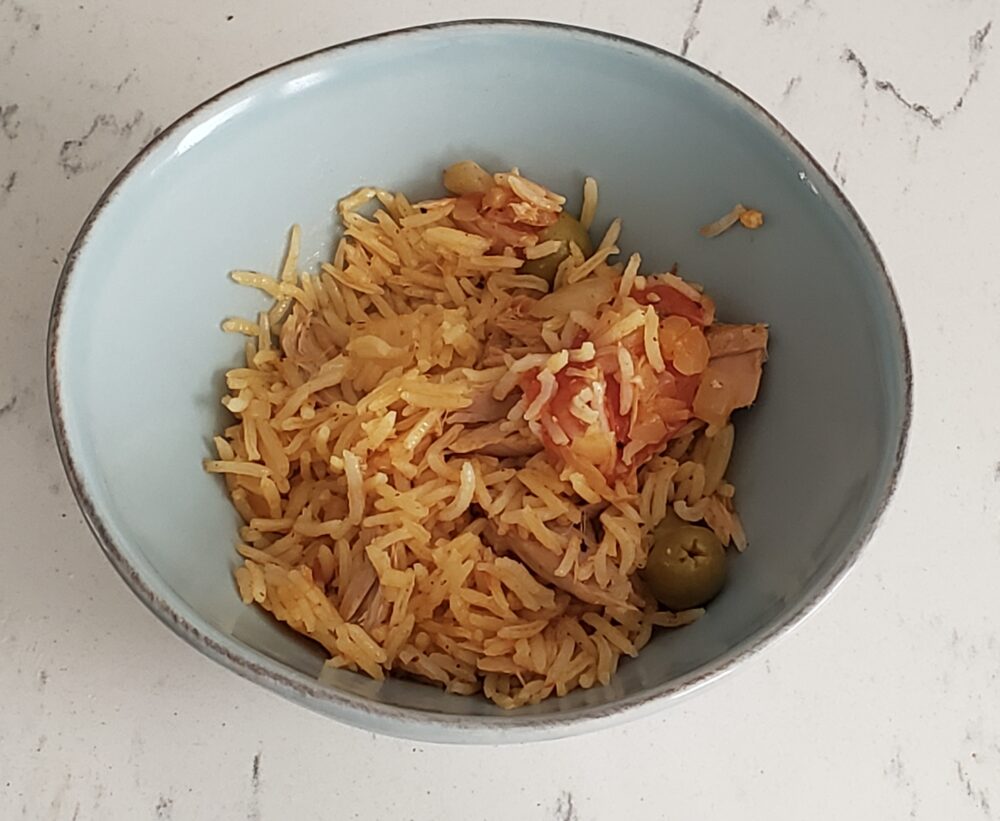
Arroz de Atum appealed to me for the same reason it probably appeals to many Cabo Verdeans – it’s unbelievably simple and super delicious.
It would not be uncommon to see a dish like this in Portugal so there’s no doubt of the Portuguese influence when it comes to the dish. And from what I understand, this is a very popular meal to bring with you to the beach.
Like most simple dishes, this all comes down to the ingredients. Long grain rice cooked with canned tuna (this is important), olives, tomatoes, and red spices (not spicy – think annatto and paprika) that give the dish its appetizing color.
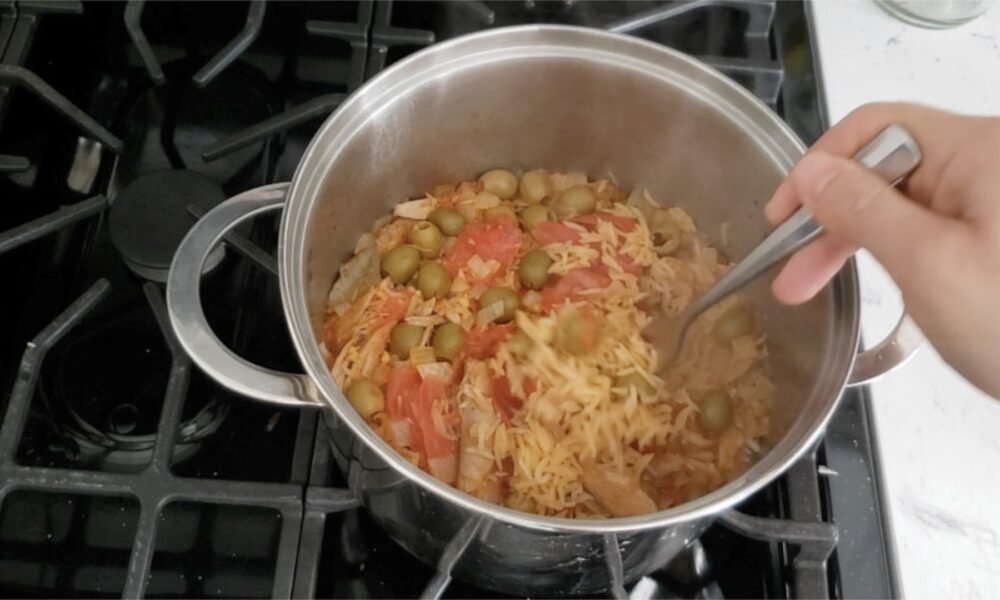
It’s really a lovely light meal that was a nice change of pace and certainly puts you somewhere between Africa and Portugal.
SPECIAL INGREDIENTS
This is a simple recipe and the ingredients themselves are rather simple and accessible, but it’s important to choose the right ones.
Long-grain rice is best, along with fresh tomatoes and vibrant spices. This is what makes a dish like this sing. And so do these few additions.
Canned Portuguese Tuna
If you can find tuna from Portugal or Cape Verde, it makes all the difference. The tuna is much thicker and closer to filets than Bumblebee.
Also the fact that it’s preserved in oil instead of water ensures the fish isn’t too bloated and also gives you another cooking ingredient that enhances the flavor.
If you’re lucky enough to have a Spanish or Portuguese market nearby, it won’t be difficult to find. Thankfully, I know a wonderful little store in Jersey City called Eira that has a huge selection of Portuguese ingredients. Although nowadays you can probably find this kind of tuna in most high-end specialty markets.
Manzanilla Olives
You probably could use most pitted olives for this recipe, but these recognizable plump green ones work really well.
Manzanilla olives are from Sevilla, Spain (not far from Portugal) and work nicely with the salty tuna. These are also the olives you might find with a classic martini.
I think the olives really add to the flavor here, but if you must omit them, you can. It might be nice then to substitute them with some white or red kidney beans (a main ingredient in Cabo Verde’s national dish).
THE RECIPE:
Arroz de Atum from Cabo Verde (Cape Verde)

An incredibly simple dish, this rice with tuna brings the bold satisfying flavors of Cape Verde to life with its influence from Portuguese and African cuisine. A perfect easy weeknight dinner or lunch to bring to the beach.
- 12-14 ounces high quality canned tuna packed in oil (preferably from Portugal or Cape Verde)
- 1 yellow onion (diced)
- 1 tomato (quartered)
- 1 tbsp garlic (crushed)
- 1 tspn paprika
- 1 tspn annatto, or achiote
- 1 cup Manzanilla olives (or plump green olives with no pit)
- 1 bay leaf
- 2 cups long grain rice (Jasmine or basmati)
- salt (to taste)
- black pepper (to taste)
Vegetables and Spices
-
Reserve oil from can of tuna.
-
Heat 3-4 tbsp of the reserved oil into a deep pot over medium. Add diced onion, quartered tomato, and crushed garlic.
-
Stir and cook until the tomato starts to release its liquid and soften. About 5-7 minutes.
-
Add salt, pepper, paprika, annatto and stir all together. Cook for about a minute.
Tuna
-
Add tuna to pot and stir. You can break the tuna up a bit with a wooden spoon, but you want to keep some big pieces.
-
Add Manzanilla olives, bay leaf, and 2.5 cups of water. Bring to boil.
Rice
-
Add 2 cups of rice, sitr well, and bring to boil
-
Lower the temperature to a simmer and cover.
-
Cook for about 20-25 minutes.
-
Let sit for 5-10 minutes before fluffing with a fork and serve.
HOW WE SCREWED IT UP
I told you this one was super simple. Even we didn’t manage to screw it up.
I honestly can’t think of anything I would have done differently – except maybe made a bigger portion. 
If I’ve mastered anything on this journey, it’s rice (a staple of almost every country), so just adding in some extra flavors didn’t throw me off too much.
We really enjoyed this and would happily add it to our regular rotation of dinners.
SAM’S REACTION
Sam used to eat tuna fish when he was younger, but as I learned when I popped open the high quality canned tuna I purchased, he is no longer interested. 
Thankfully rice is still in his diet.
He didn’t eat the tuna or the olives, but he did enjoy the rice (even with all the flavoring). So there is definitely still hope for him!
NEXT TIME
We’re sticking in Africa next week but heading to the mainland to a landlocked country that Sam is going to like because of its nickname. Central African Republic, but for Sam’s sake, we’ll call it C.A.R….


